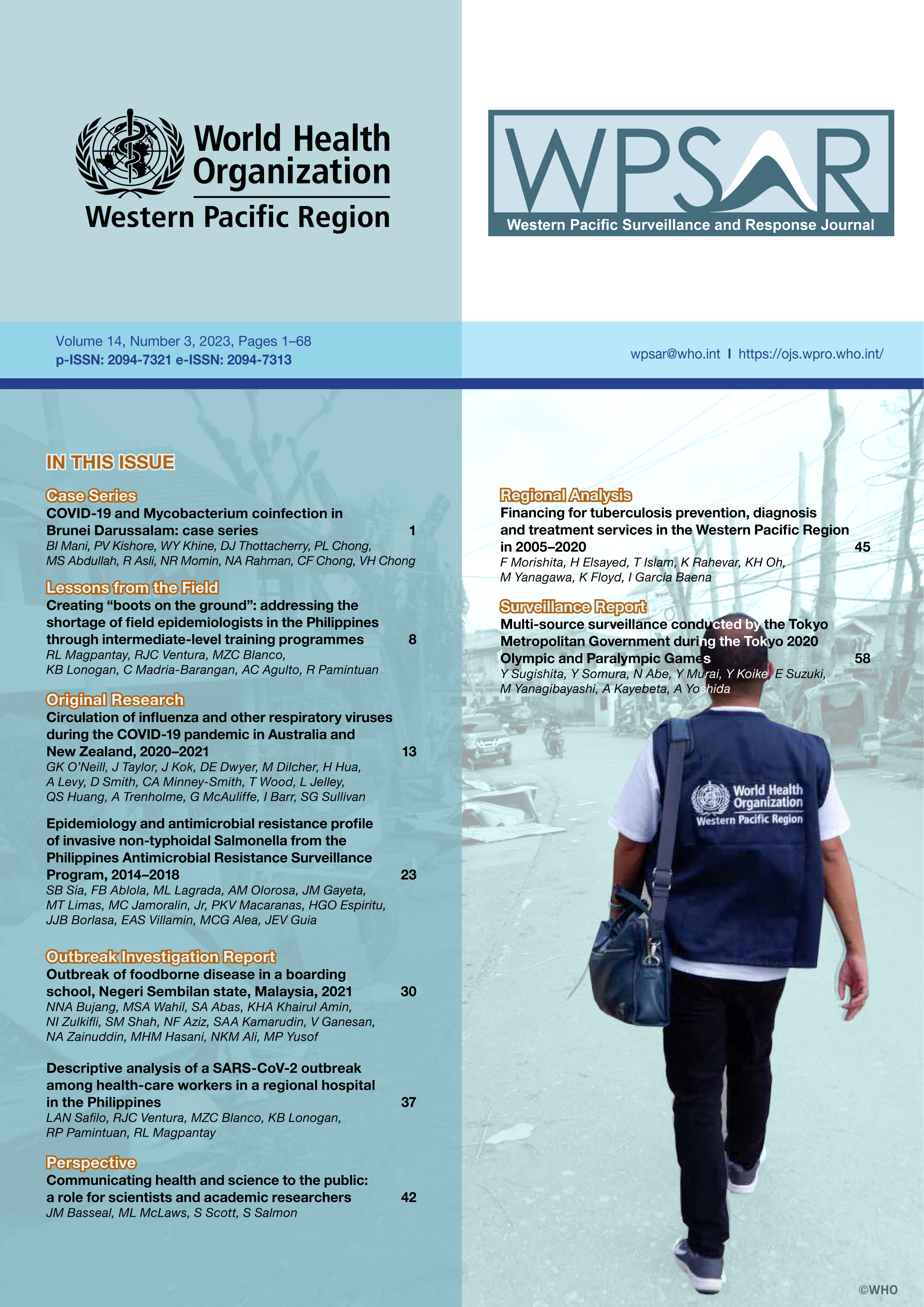Multi-source surveillance conducted by the Tokyo Metropolitan Government during the Tokyo 2020 Olympic and Paralympic Games
DOI:
https://doi.org/10.5365/wpsar.2023.14.3.978Keywords:
epidemiological surveillance, sentinel surviellance, syndromic surveillance, infectious diseases, mass gatherings, Tokyo, JapanAbstract
The Tokyo 2020 Olympic and Paralympic Games (the Games) were held from 23 July to 5 September 2021 in Tokyo, Japan, after a 1-year delay due to the coronavirus disease (COVID-19) pandemic. The Tokyo Metropolitan Government was responsible for monitoring and responding to infectious disease outbreaks other than COVID-19 during the Games. A multi-source surveillance system was used from 1 July to 12 September 2021 for the early detection and rapid response to infectious diseases. This included routine notifiable disease surveillance, sentinel surveillance, syndromic surveillance, cluster surveillance, ambulance transfer surveillance and the Tokyo Infectious Alert system. Daily reports were disseminated summarizing the data collected from the multi-source surveillance system. No case of infectious disease under the Tokyo Metropolitan Government system required a response during the Games. The multi-source surveillance was useful for providing intelligence during the Games and, if required, could contribute to the early detection and rapid response to outbreaks during other mass gatherings. The system could be improved to overcome the challenges implied by the findings of this multi-source surveillance.

